
Tempo
Description:
Tempo is a novel form of digital map, taking away the need for annoying speech-based commands - 'Turn Right in 300 yds'. This works through spatialising the user's playlist, allowing them to intuitively follow their music to the destination.
Type:
Solo Project
Skills explored:
Completed:
Jan - Jun 2024, Masters Project
'Problems facing existing digital maps...'
Digital mapping applications such as Google Maps have revolutionised the way in which we navigate the modern world. However, most digital maps require the user to look at their phone screen for the directional commands - leading to a potentially dangerous visual distraction. To combat this, many apps have introduced speech-based navigation as an altertanitve. However, most users find the commands 'annoying' and tend to disable this feature...

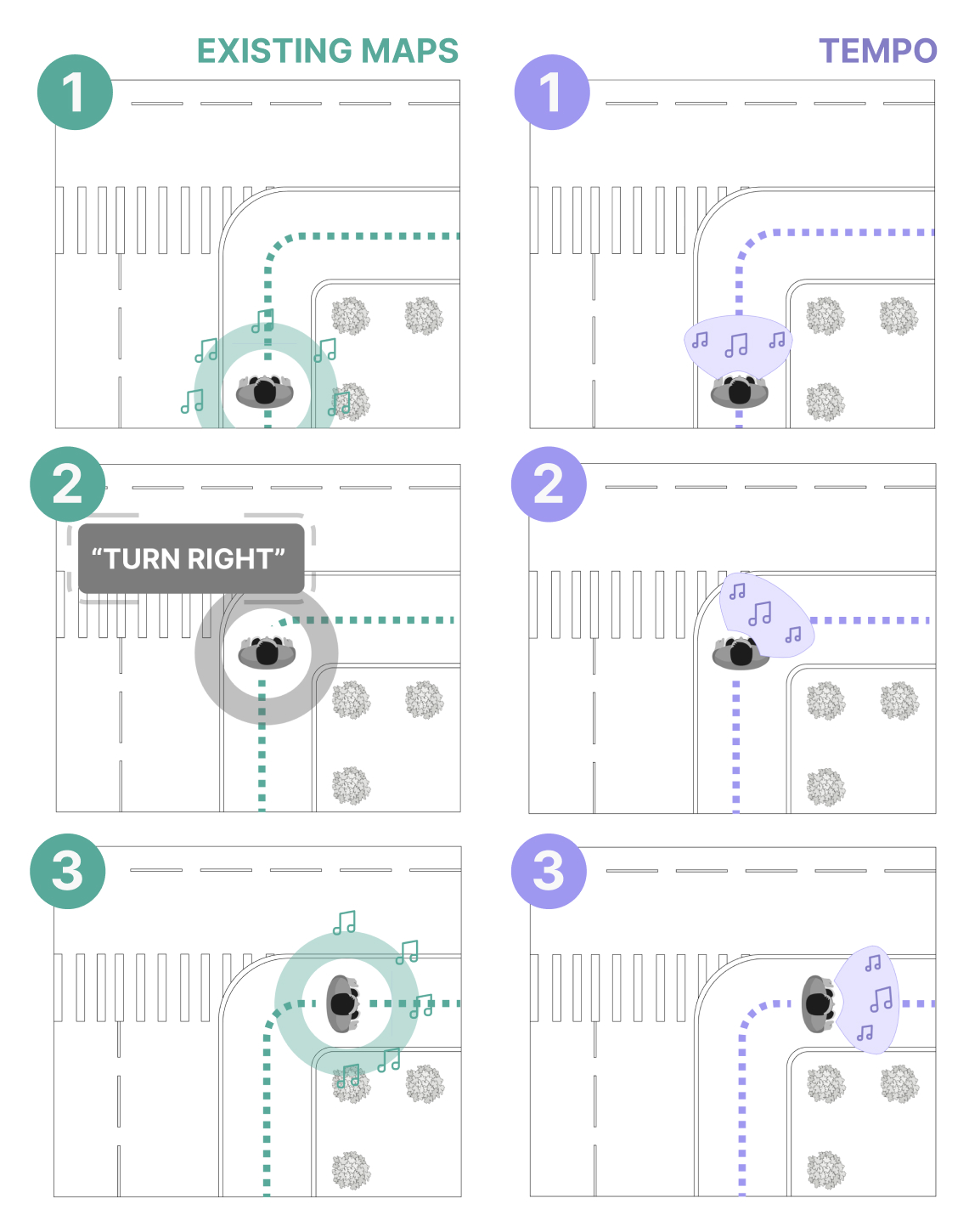
The Solution: Tempo
After extensieve concept exploration, I designed an alternative feature - Tempo. Tempo spatialises the user's music to give them the impression of the music command from a certain direction. When linked to a pre-defined route, this creates a far more pleasurable navigtional interaction as it removes the need for disruptive and annoying speech-based commands. Instead, the user can simply listen to their music as they would normally, and follow it to their destination.
- diagram of Tempo vs an existing version.
Development Srategy
Due to the User Experience of Tempo being a central focus of the project, I devised a feedback-driven approach inlcluding: an optimisation study to ensure high intuition of the technology, and a contextual enquiry to identify any final improvements prior to benchmarking Tempo against Google Maps. All studies were carried out on a diverse range of participants to best represent the general public, consent was given to use their data.

Study 1: Optimisation Study
The first study featured an exam-like format, a testing software was developed to randomly move the percieved spatial position of a song around a participants head. Once the motion of the song had finished, the participant was asked to turn and face the music. Once satisfied, the participant's orientation was recorded. This data indicated the accuracy of the spatial positioning of the music, as well as the time taken for the participant to localise the sound source.
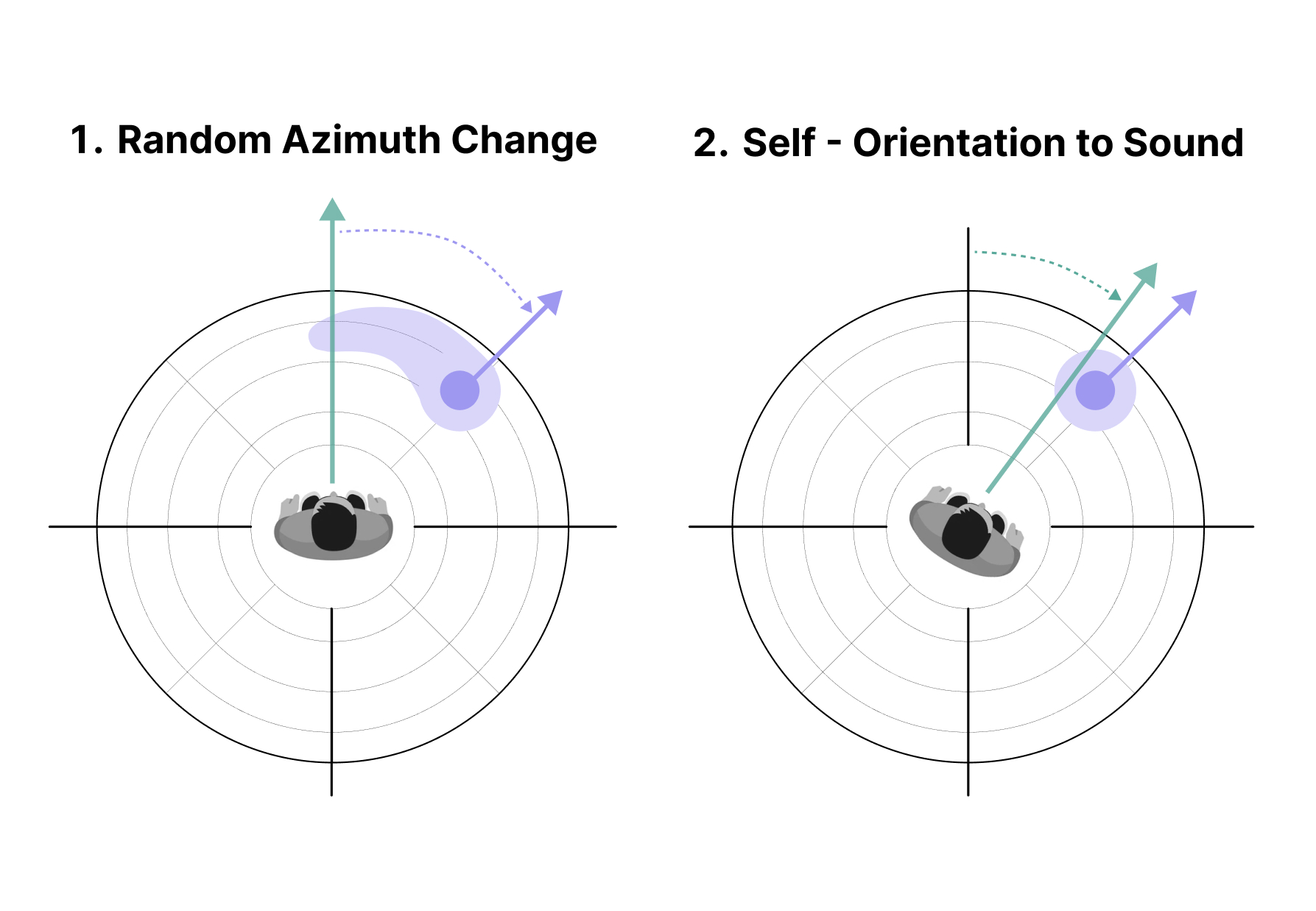
Optimisation Study: Command Iterations
The optimisation study adopted an iterative and agile approach. This meant that the 24 participants were divided into 3 groups of 8 this allowed me to test different versions of the sound's movement to identify the most intuitive version. To decide this, 3 iterations were made: an instant change of direction, a gradual panning of the sound, and a gradual pan of the sound alongside a subtle volume increase.
- different iterations tested during the optimisation study.
Optimisation Study: Results
Based upon the recorded metrics, statistical analysis and visualisation plots were created to determine the optimal iteration. This concluded that there was a significant difference in the time taken to localise the sound source. However, there was no difference in the localisation accuracy, with every iteration scoring an accuracy of above 93%. This confirmed that the concept of using spatially manipulated audio streams was indeed an intuitive form of directional command.
Result plots of the optimiation study -
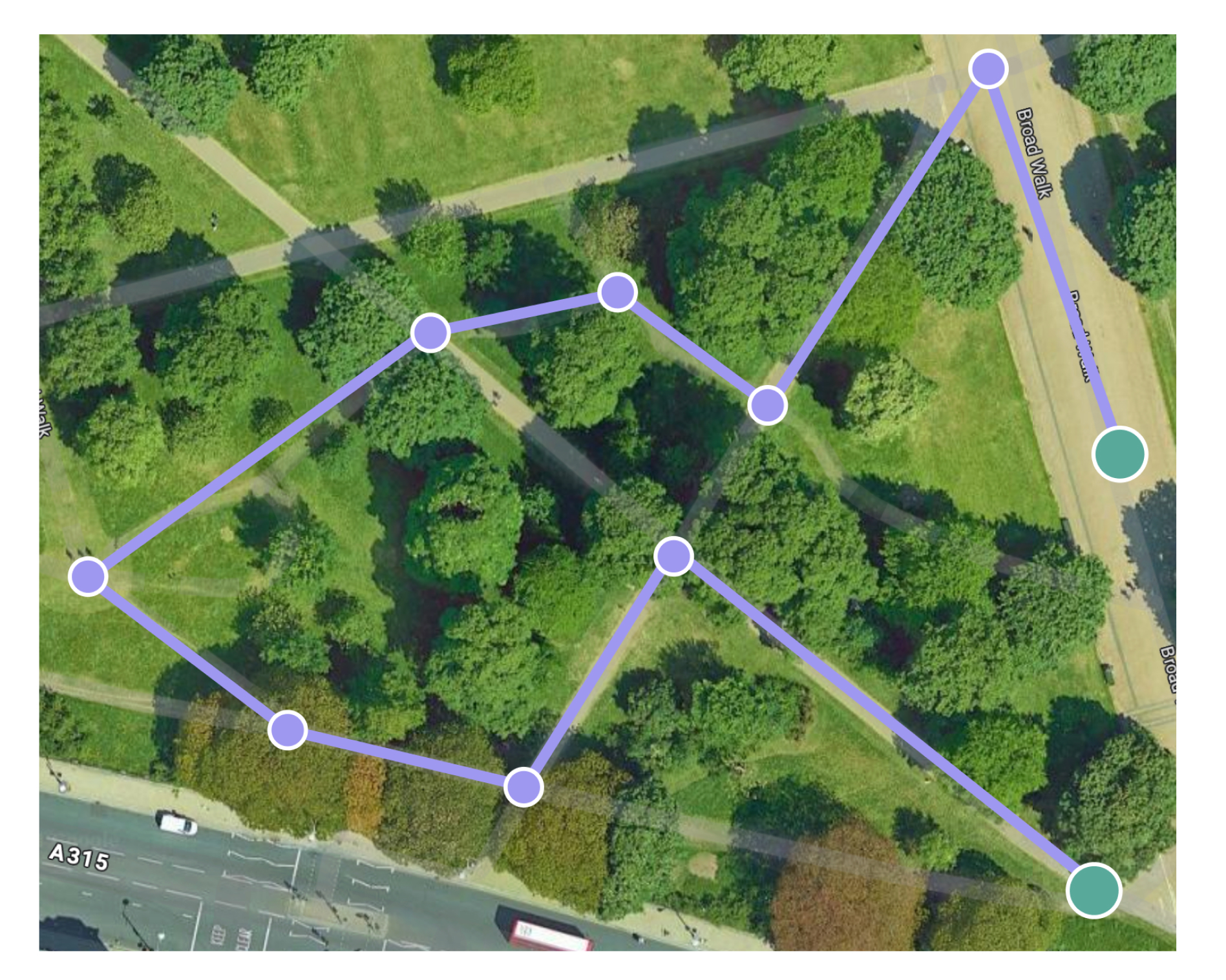
Study 2: Contextual Enquiry
Now that the concept's effectiveness had been proved, it was essential to pilot the technology prior to testing the final version against Google Maps. To do this I recruited 3 participants - including an inudstry-facing audio engineer, to try out Tempo when navigating a pre-defined route. Interviews were then conducted to observe any shared thoughts and identify areas for improvement.
- diagram of the route taken during the enquiry.
Contextual Enquiry: Final Improvements
After collating insights from the interviews, two key changes were made to Tempo. The first was the implementation of the cross-fader, this meant that there was never an absence of music during the use of Tempo, thus ensuring that directional commands would not be missed. Secondly, a pre-alerting feature was added, this aimed to subtly warn the user of a direction prior to it occuring. This also aimed to reduce the number of errors encountered when using Tempo.
Crossfader + Pre-alert improvements -
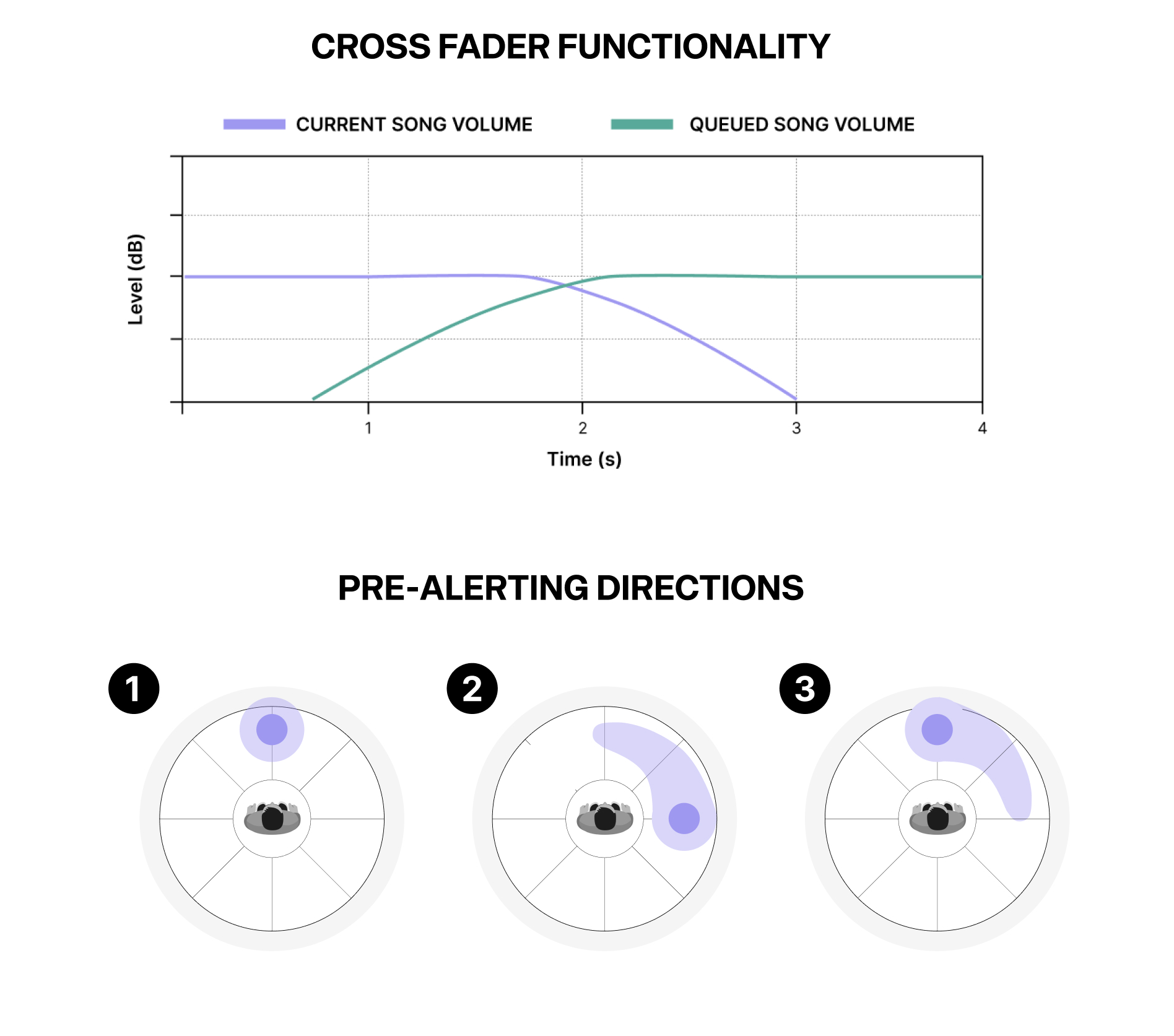
Tempo Software Diagram
Once both studies had been completed, I was ready to develop a works-like prototype of Tempo for extensive testing. The prototype featured a Supperware Headtracker that communicated to a MaxMSP script running on my laptop. Together, live spatial audio rendering was achieved, meaning that a sound could be moved relative to the user's head and provide specifc directional commands when needed. The controller component was also added as an external input to simulate the route-planning and GPS features during the full benchmarking test against Google Maps. For more technical information on the system, please check out the supplementary academic report about this project.
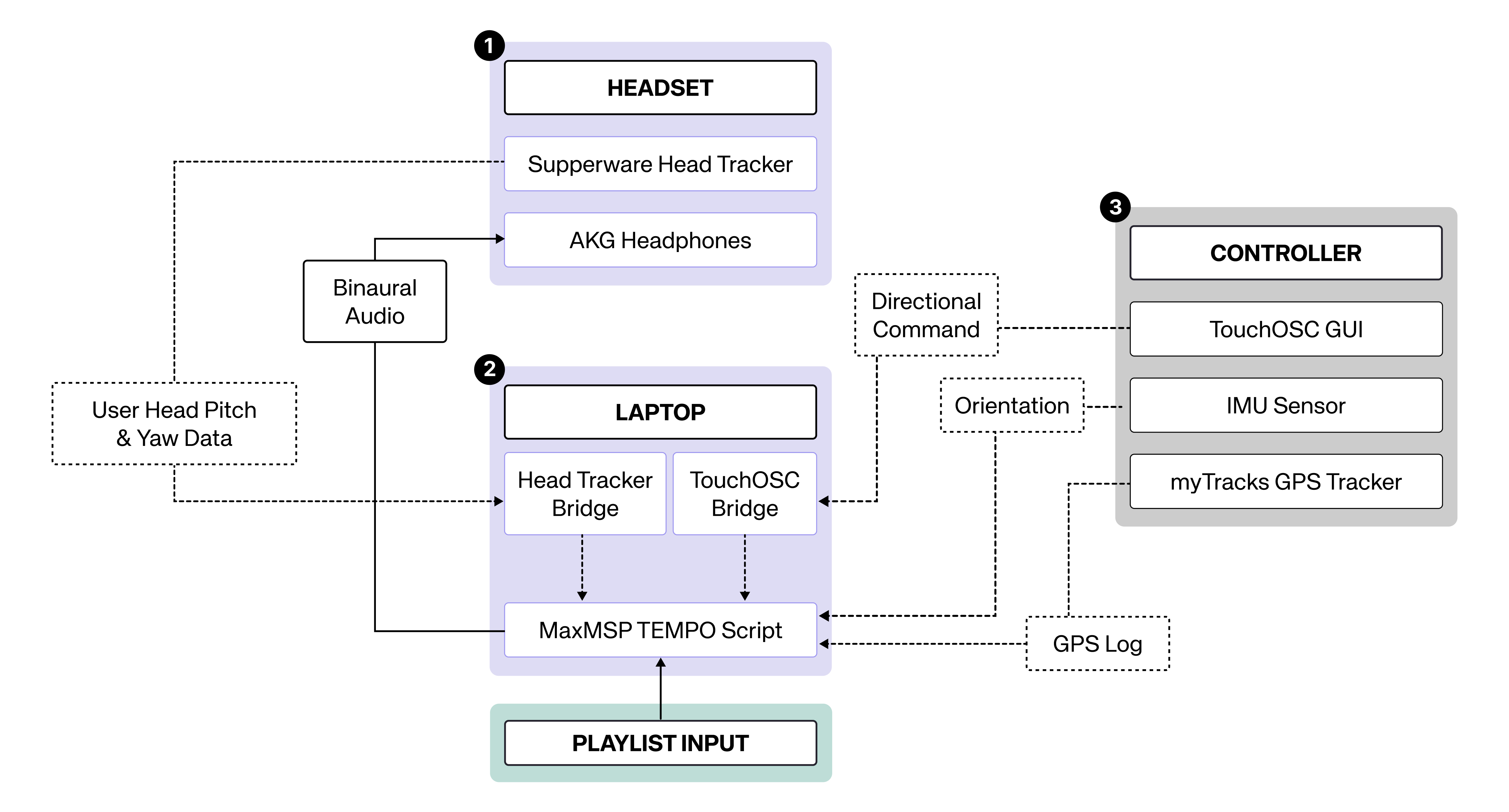
Final Benchmarking vs Google Maps
The final stage of this project was evaluating the experience of Tempo against an exisitng speech-based form of navigation, I chose to compare Tempo against Google Maps - the most widely used digital map on the market. To do this I gathered 2 groups of 8 participants, Group A was assigned one route with Google Maps and one route with Tempo - the routes were inverted for Group B. The routes were unique but equi-distant and consisted of an equal number of directional commands. From the results, I monitored the time taken to complete the route and number of errors commited. Furthermore, follow-up semi-structured interviews were conducted in order to gain insights into how the user-experience of both technologies compared.
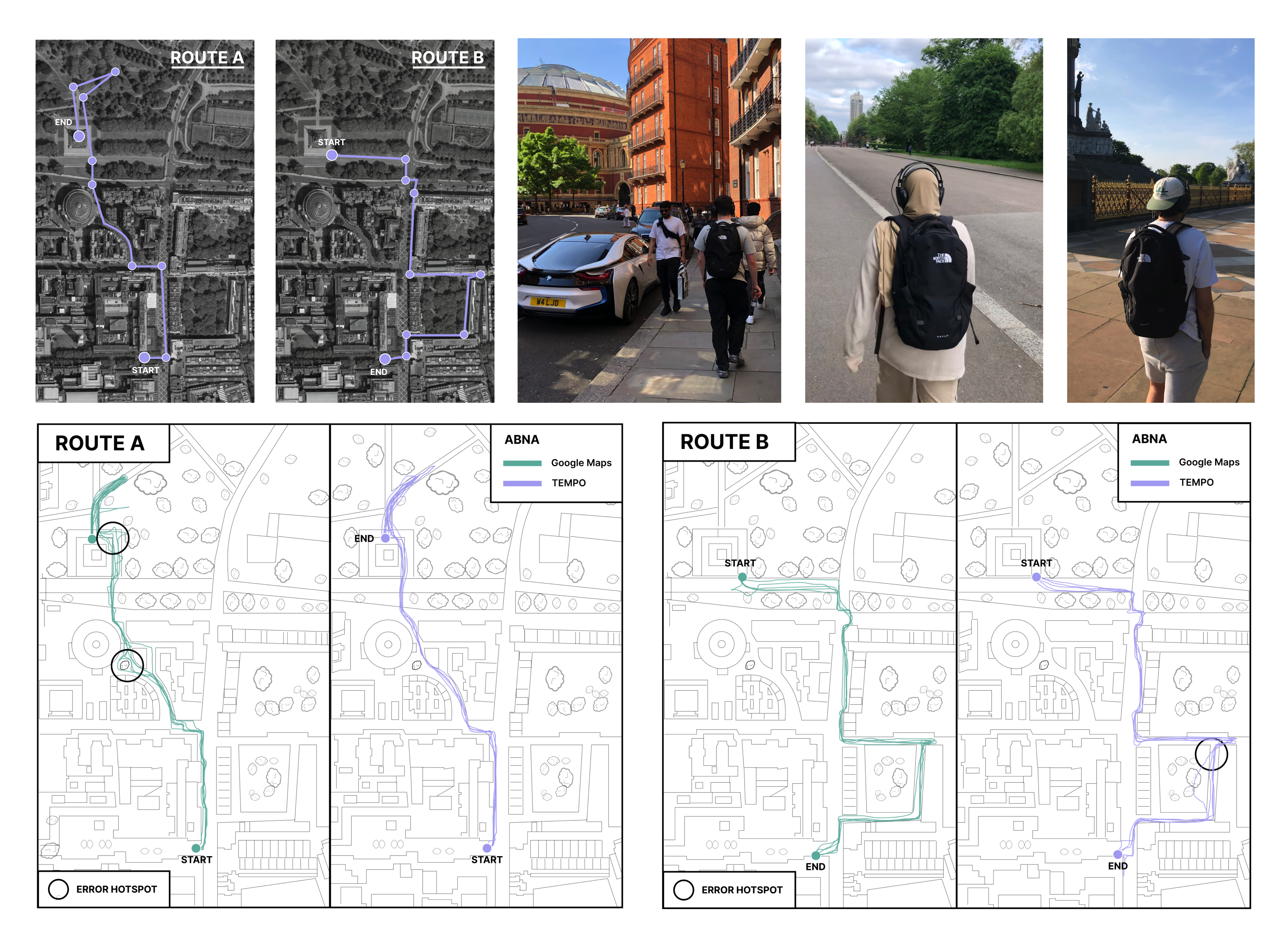
Enhanced User-Experience
When observing the results from the final benchmarking study, I discovered that approximately 92% of the participants preffered the more subtle and muscial interaction of Tempo over the existing speech-based style of Google Maps. Furthermore, no significant difference in the time taken and number of errors identified was found between the two maps - suggesting that Tempo matches the effectiveness of speech-based maps as a form of auditory navigation. With the introduction of head-trackers into modern headphones, I truly believe that an audio-based navigational innovation like Tempo would greatly enhance the user-experience of digital maps.
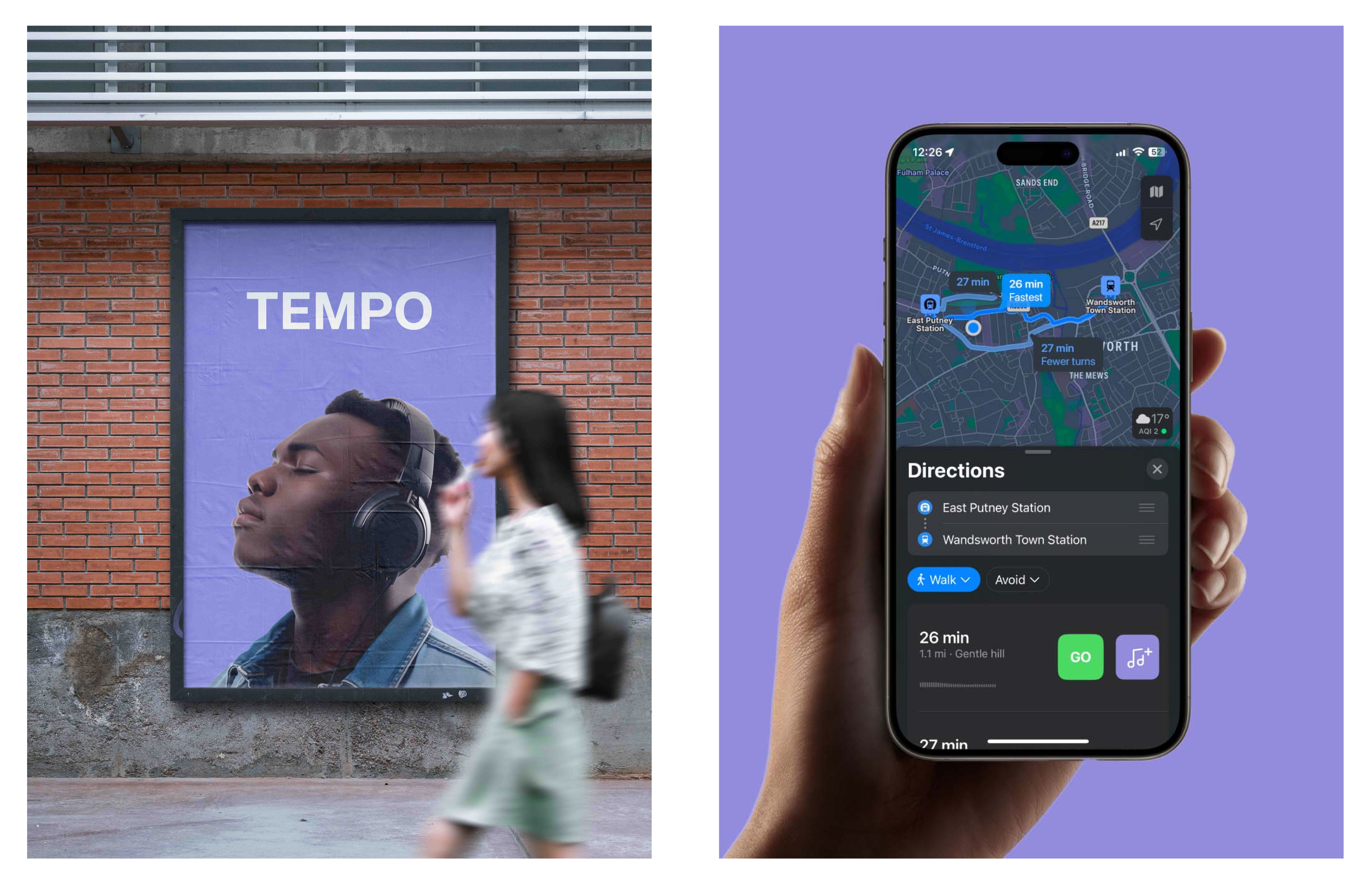
Supplementary Academic Paper
I wanted to keep my website simple, but for more information about each process check out the academic report I wrote that summarises the research, development and testing of Tempo!





